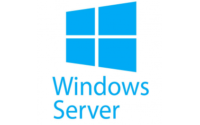Microsoft renovate its VMware Solution in Azure – What are the use case scenarios for your customers?
Microsoft on 4th May has announced a forthcoming update to the Azure VMware Solution, which aims to make it easier and cheaper to migrate on-premises VMware workloads to Microsoft’s Azure cloud platform. The next-gen Azure VMware Solution is now in preview in the U.S. East and West Europe Azure regions, and general availability is targeted for the second half of 2020. This will also be available for the preview in Canada and West US2 in the next quarters this year.
The new Azure VMware Solution empowers customers to seamlessly extend or completely migrate their existing on-premises VMware applications to Azure without the cost, effort, or risk of re-architecting applications or retooling operations. Customers can also save money with Windows Server and SQL Server workloads running on Azure VMware by taking advantage of Azure Hybrid Benefits. This means the customers who already have on-prem Windows Server and SQL Server licenses–can cut back further on their cost in Azure Cloud.

Image Source: Microsoft Site
The long-awaited VMware-Microsoft cloud alliance became official in April 2019 when the two enterprise technology giants unveiled the contours of a joint solution that will natively bring VMware environments into the Azure cloud.
What is VMWare Solutions in Azure?
It’s a first-party service solution in Azure Marketplace offered by Microsoft Azure. This is directly developed, owned, managed, and operated by Microsoft.
Is the new Solution is Certified by VMware?
The new solution is built on Azure, delivering the speed, scale, and high availability of Azure global infrastructure. You can provision a full VMware Cloud Foundation environment on Azure and gain compute and storage elasticity as your business needs change. Azure VMware Solution is VMware Cloud Verified, giving customers the confidence they’re using the complete set of VMware capabilities, with consistency, performance, and interoperability for their VMware workloads.
Let’s see some possible use cases and scenarios that are available at present.
Scenario 1: Datacenter footprint reduction, consolidation, and retirement.
Customers can reduce their data center footprint with a one-time re-deployment of the VMware-based virtual machines. Lift and shift any vSphere-based workloads to Azure in a non-disruptive, automated, scalable, and highly available way without changing the underlying vSphere hypervisor.
Scenario 2: Datacenter expansion based on demand.
Customers can seamlessly and elastically expand or augment data center capacity—and adjust the costs—on demand for short periods of time.
Scenario 3: Disaster recovery and business continuity.
Customers can use a VMware stack deployed in Azure as a primary or secondary on-demand disaster recovery site for on-premises datacenter infrastructure.
Scenario 4: Application modernization
Customers can tap into the Azure ecosystem to modernize the applications without having to rebuild your VMware-based environments.
Why VMware Admins will find this solution very attractive?
VMware Admins can use the same VMware tools that they use today to manage your VMware on-premises environments, including vCenter, vSphere Client, vRealize Operations, NSX Manager, Power CLI, and API calls. They can also use VMware HCX technology to support migration efforts.
Conclusion:
VMware was the pioneer of the virtualization platform in the world and both Azure and AWS have already formed a robust partnership with VMware and lots of development going on in both sides to get the max chunk of the VMware workloads which will be migrated to public cloud in next few years. This will be a win-win situation for both the technology specialist, for both VMware Admins and Azure Admins it is going to be a very good learning experience. Both can learn and leverage the existing tools and interface of each technology and manage with ease and get the best out of both the technologies in this fast-changing world where the public cloud is going to rule.


